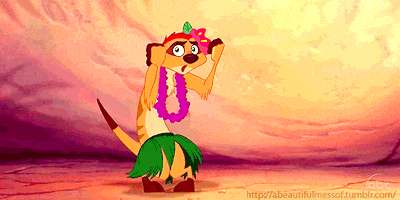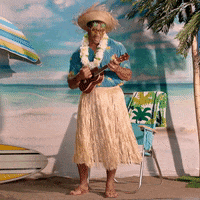I've been checking out the prices of ppl selling tangs on these forums. Prices are alil crazy. So my question is, is Hawaii closed for good? Ask for a friend
Navigation
Install the app
How to install the app on iOS
Follow along with the video below to see how to install our site as a web app on your home screen.
Note: This feature may not be available in some browsers.
More options
You are using an out of date browser. It may not display this or other websites correctly.
You should upgrade or use an alternative browser.
You should upgrade or use an alternative browser.
Is Hawaii Close For Good?
- Thread starter brick-brothers
- Start date
- Tagged users None
I assume it will be closed for the time being, and probably long into the future. Just my opinion, but I dont see any harm in it, good to conserve wild caught fish I think. But dont fret! something tells me Captive bred yellow tangs are going to explode in popularity, thus bringing the price down!!
Upvote
1
No one can answer that... maybe a fortune teller?
I believe it has closed before and re-opened years ago but seriously no one knows unless they can see the future.
I believe it has closed before and re-opened years ago but seriously no one knows unless they can see the future.
Upvote
0
I assume it will be closed for the time being, and probably long into the future. Just my opinion, but I dont see any harm in it, good to conserve wild caught fish I think. But dont fret! something tells me Captive bred yellow tangs are going to explode in popularity, thus bringing the price down!!
I would not count on any significant decrease in price for quite some time. Breeding tangs is not at all like throwing some clownfish in a tank and waiting a couple years. It is an expensive and very involved process.
Upvote
0
I seen a yellow tang cost the same as a Gem Tang. How did the Gem Tang go from 2k to $4/500?
Upvote
0
Increased demand eventually led to an increase in supply, which in turn brought down the price.I seen a yellow tang cost the same as a Gem Tang. How did the Gem Tang go from 2k to $4/500?
Upvote
0
Hawaain Government Officials are waiting for more dolla bills before they sellout their vote

True. Notice the tuna fishing (which has massive bycatch) is alive and well. Ornamental fish trade just dont have the lobbyists/money.
Upvote
0
vetteguy53081
Well known Member and monster tank lover
View Badges
Partner Member 2024
Excellence Award
Reef Tank 365
RGB
Article Contributor
Tampa Bay Reef Keepers
West Palm Beach Reefer
Hospitality Award
Ocala Reef Club Member
305 Reef Club
Wisco Reefers
Midwest Reefer
Fish Medic
MAC of SW Florida
Rock Pool Reef Keepers
R2R Secret Santa 2023
My Tank Thread
My Aquarium Showcase
Update (courtesy of Coral)
In the ongoing legal battle over Hawaii’s marine aquarium fishery, PIJAC, and the Hawaiian aquarium fishermen that it represents, have submitted their latest Environmental Impact Statement (EIS) covering the West Hawaii aquarium fishery. Framed as a Revised Final Environmental Impact Statement (RFEIS), the 1,585-page pdf document dated May 26, 2021, and published June 8th, is available for download.
The document’s Executive Summary (included below) offers a complete timeline of the legal challenges that the aquarium fishery has faced and outlines the fishery’s latest proposal to reopen.
A Revised Aquarium Fishery
Should their latest proposal be accepted and approved, only the West Hawaii Regional Fishery Management Area would reopen as a result. Just seven collection permits would be available, and only eight species of reef fish could be collected for the aquarium trade. These eight species were selected based on the following criteria:
In addition to the highly restricted list of approved species, catch quotas for all 8 species are proposed, spreading the total catch out equally among 7 permit holders. This creates a maximum allowable annual catch for the 8 proposed species:
At this point, the EIS is back in the hands of Hawaii’s Bureau of Land Management for reconsideration. The possible outcomes range from acceptance to outright rejection of the proposal and the continued ban of any aquarium fishing in West Hawaii.
Executive Summary
In October 2017, the circuit court ruled that, based upon the Supreme Court of Hawai’i’s opinion, existing Commercial Aquarium Permits (Aquarium Permits) for use of fine mesh nets to catch aquatic life for aquarium purposes are illegal and invalid. The circuit court ordered the Department of Land and Natural Resources (DLNR) not to issue any new Aquarium Permits pending environmental review. The DLNR has not issued new or additional Aquarium Permits under HRS §188-31 since September of 2017.
In January 2021, the court ruled that Commercial Marine Licenses (CMLs) for commercial aquarium collection were invalid as well, and the DLNR began the process of notifying all current permit holders that the CML could no longer be used for commercial aquarium purposes, updating the Specific Terms and Conditions of the CML to reflect that environmental review was needed prior to using a CML for commercial aquarium purposes.
The Applicant initially prepared and submitted an Environmental Assessment on April 8, 2018, evaluating the impacts of issuance of Aquarium Permits on the island of Hawai’i programmatically to any applicant over a 12-month analysis period. The DLNR determined on July 26, 2018, that preparation of an Environmental Impact Statement (EIS) was required, based on five significance criteria outlined in Title II, Chapter 200, Hawai’i Administrative Rules. An evaluation of the significance criteria, including the five identified by the DLNR, is provided in Section 5.6 of this document.
A Draft Environmental Impact Statement (DEIS) evaluating the impacts of issuance of 14 Aquarium Permits for the West Hawai’i Regional Fishery Management Area (WHRFMA) was published on November 23, 2019.
A Final Environmental Impact Statement (FEIS) evaluating the impacts of issuance of 10 Aquarium Permits for the WHRFMA was published on April 23, 2020, and included a change to the proposed action, reducing the number of Commercial Aquarium Permits from 14 to 10. On June 23, 2020 the State of Hawai’i Board of Land and Natural Resources (BLNR) published the FEIS Acceptance Determination of non-acceptance of the FEIS.
A Revised DEIS was prepared to address the 14 concerns raised by the BLNR in their non-acceptance determination. It evaluated the impacts of issuance of seven Aquarium Permits, West Hawai’i Aquarium Permits, and corresponding Commercial Marine Licenses (CMLs) for the WHRFMA, creation of a Revised White List consisting of eight species (prohibiting catch of the other 32 species currently on the White List), and the creation of individual catch quotas for each of the eight species on the proposed Revised White List was published on February 23, 2021.
Since the release of the Revised DEIS, edits were made (Appendix E) in response to public comments (see Appendix C), including editing language in the Revised FEIS to clarify that population trends are used as the measure of sustainability to evaluate impacts to fish populations, and edits to the proposed enforcement and compliance measures in Section 3.7.2.
The Applicant has prepared this Revised FEIS to inform the public of the proposed action (i.e., issuance of 7 Aquarium Permits, corresponding CMLs, creation of a Revised White List, and implementation of individual catch quotas for the 8 species on the Revised White List) and the impacts of the proposed action and its alternatives, and to incorporate information gained through public involvement throughout the entirety of the Hawai’i Environmental Policy Act (HEPA) process beginning in 2018. The Preferred Alternative includes issuance of 7 Aquarium Permits and CMLs for the WHRFMA, reduction of the White List from 40 to 8 species, and implementation of individual catch quotas for all 8 species. No Aquarium Permits or CMLs for commercial aquarium collection would be issued under this action for other areas of the state, including East Hawai’i, and collection in the WHRFMA would be limited to the eight species on the proposed Revised White List. Implementation of the Preferred Alternative would ensure the lawful, responsible, and sustainable commercial collection of eight fish species from the WHRFMA.
Aside from the additional conservation measures included in the Preferred Alternative, the issuance of 7 Aquarium Permits and CMLs under the Preferred Alternative does not include any activities different from, or in addition to, those that have occurred in the past. There would be no construction of permanent or semi-permanent infrastructure, no discharges into coastal, surface or ground waters, no dredging, and no significant use of hazardous materials that could be released into the environment. The DLNR’s issuance of 7 Aquarium Permits and CMLs is not anticipated to result in significant beneficial or adverse impacts to water and air quality, geology and soil resources, aesthetics, noise, vegetation, terrestrial wildlife, avian species, threatened and endangered species, land use, public health and safety, communications, transportation, utilities, or population and demographics from their current condition.
Populations of all eight species that would be collected under the Preferred Alternative have been either stable or increasing under historic annual collection (2000-2017, after establishment of the WHRFMA), and it is therefore anticipated that those population trends would continue under the collection proposed under the Preferred Alternative.
Two studies have concluded that the aquarium fishery has no significant impact on coral or the reef ecosystem. In addition, herbivores collected by the aquarium fishery typically consist of the smaller size classes which are the least effective sizes for cropping algae. One study found there were no increases the abundance of macroalgae where the abundance of herbivores was reduced by aquarium collecting, though turf algae is the primary food of herbivores, and thus healthy herbivore populations are critical for healthy coral populations.
Aquarium industry submits revised EIS: Fishing permits, allowable species to be reduced – West Hawaii Today
In the ongoing legal battle over Hawaii’s marine aquarium fishery, PIJAC, and the Hawaiian aquarium fishermen that it represents, have submitted their latest Environmental Impact Statement (EIS) covering the West Hawaii aquarium fishery. Framed as a Revised Final Environmental Impact Statement (RFEIS), the 1,585-page pdf document dated May 26, 2021, and published June 8th, is available for download.
The document’s Executive Summary (included below) offers a complete timeline of the legal challenges that the aquarium fishery has faced and outlines the fishery’s latest proposal to reopen.
A Revised Aquarium Fishery
Should their latest proposal be accepted and approved, only the West Hawaii Regional Fishery Management Area would reopen as a result. Just seven collection permits would be available, and only eight species of reef fish could be collected for the aquarium trade. These eight species were selected based on the following criteria:
- No statistically significant population declines in Open Areas between 1999/2000 and 2017/2018 (WHAP data from DAR 2019a)
- Recent catch (2017 fiscal year) of at least 100 fish (representing at least 0.03% of the total aquarium catch)
- Open Area population density of at least 0.5 fish/100m2 (data from DAR 2019a)
In addition to the highly restricted list of approved species, catch quotas for all 8 species are proposed, spreading the total catch out equally among 7 permit holders. This creates a maximum allowable annual catch for the 8 proposed species:
- Yellow Tang, Zebrasoma flavescens – 28,571 per fisher/200,000 total
- Potter’s Angelfish, Centropyge potteri – 625/4376
- Kole Tang, Ctenochaetus strigosus – 4,285/30,000
- Cheveron Tang, Ctenochaetus hawaiiensis – 450/3152
- Bird Wrasse, Gomphosus varius – 49/344
- Naso Tang, Naso lituratus – 838/5872
- Brown Surgeonfish, Acanthurus nigrofuscus – 114/800
- Thompson’s Surgeonfish, Acanthurus thompsoni – 288/2016
At this point, the EIS is back in the hands of Hawaii’s Bureau of Land Management for reconsideration. The possible outcomes range from acceptance to outright rejection of the proposal and the continued ban of any aquarium fishing in West Hawaii.
Executive Summary
In October 2017, the circuit court ruled that, based upon the Supreme Court of Hawai’i’s opinion, existing Commercial Aquarium Permits (Aquarium Permits) for use of fine mesh nets to catch aquatic life for aquarium purposes are illegal and invalid. The circuit court ordered the Department of Land and Natural Resources (DLNR) not to issue any new Aquarium Permits pending environmental review. The DLNR has not issued new or additional Aquarium Permits under HRS §188-31 since September of 2017.
In January 2021, the court ruled that Commercial Marine Licenses (CMLs) for commercial aquarium collection were invalid as well, and the DLNR began the process of notifying all current permit holders that the CML could no longer be used for commercial aquarium purposes, updating the Specific Terms and Conditions of the CML to reflect that environmental review was needed prior to using a CML for commercial aquarium purposes.
The Applicant initially prepared and submitted an Environmental Assessment on April 8, 2018, evaluating the impacts of issuance of Aquarium Permits on the island of Hawai’i programmatically to any applicant over a 12-month analysis period. The DLNR determined on July 26, 2018, that preparation of an Environmental Impact Statement (EIS) was required, based on five significance criteria outlined in Title II, Chapter 200, Hawai’i Administrative Rules. An evaluation of the significance criteria, including the five identified by the DLNR, is provided in Section 5.6 of this document.
A Draft Environmental Impact Statement (DEIS) evaluating the impacts of issuance of 14 Aquarium Permits for the West Hawai’i Regional Fishery Management Area (WHRFMA) was published on November 23, 2019.
A Final Environmental Impact Statement (FEIS) evaluating the impacts of issuance of 10 Aquarium Permits for the WHRFMA was published on April 23, 2020, and included a change to the proposed action, reducing the number of Commercial Aquarium Permits from 14 to 10. On June 23, 2020 the State of Hawai’i Board of Land and Natural Resources (BLNR) published the FEIS Acceptance Determination of non-acceptance of the FEIS.
A Revised DEIS was prepared to address the 14 concerns raised by the BLNR in their non-acceptance determination. It evaluated the impacts of issuance of seven Aquarium Permits, West Hawai’i Aquarium Permits, and corresponding Commercial Marine Licenses (CMLs) for the WHRFMA, creation of a Revised White List consisting of eight species (prohibiting catch of the other 32 species currently on the White List), and the creation of individual catch quotas for each of the eight species on the proposed Revised White List was published on February 23, 2021.
Since the release of the Revised DEIS, edits were made (Appendix E) in response to public comments (see Appendix C), including editing language in the Revised FEIS to clarify that population trends are used as the measure of sustainability to evaluate impacts to fish populations, and edits to the proposed enforcement and compliance measures in Section 3.7.2.
The Applicant has prepared this Revised FEIS to inform the public of the proposed action (i.e., issuance of 7 Aquarium Permits, corresponding CMLs, creation of a Revised White List, and implementation of individual catch quotas for the 8 species on the Revised White List) and the impacts of the proposed action and its alternatives, and to incorporate information gained through public involvement throughout the entirety of the Hawai’i Environmental Policy Act (HEPA) process beginning in 2018. The Preferred Alternative includes issuance of 7 Aquarium Permits and CMLs for the WHRFMA, reduction of the White List from 40 to 8 species, and implementation of individual catch quotas for all 8 species. No Aquarium Permits or CMLs for commercial aquarium collection would be issued under this action for other areas of the state, including East Hawai’i, and collection in the WHRFMA would be limited to the eight species on the proposed Revised White List. Implementation of the Preferred Alternative would ensure the lawful, responsible, and sustainable commercial collection of eight fish species from the WHRFMA.
Aside from the additional conservation measures included in the Preferred Alternative, the issuance of 7 Aquarium Permits and CMLs under the Preferred Alternative does not include any activities different from, or in addition to, those that have occurred in the past. There would be no construction of permanent or semi-permanent infrastructure, no discharges into coastal, surface or ground waters, no dredging, and no significant use of hazardous materials that could be released into the environment. The DLNR’s issuance of 7 Aquarium Permits and CMLs is not anticipated to result in significant beneficial or adverse impacts to water and air quality, geology and soil resources, aesthetics, noise, vegetation, terrestrial wildlife, avian species, threatened and endangered species, land use, public health and safety, communications, transportation, utilities, or population and demographics from their current condition.
Populations of all eight species that would be collected under the Preferred Alternative have been either stable or increasing under historic annual collection (2000-2017, after establishment of the WHRFMA), and it is therefore anticipated that those population trends would continue under the collection proposed under the Preferred Alternative.
Two studies have concluded that the aquarium fishery has no significant impact on coral or the reef ecosystem. In addition, herbivores collected by the aquarium fishery typically consist of the smaller size classes which are the least effective sizes for cropping algae. One study found there were no increases the abundance of macroalgae where the abundance of herbivores was reduced by aquarium collecting, though turf algae is the primary food of herbivores, and thus healthy herbivore populations are critical for healthy coral populations.
Aquarium industry submits revised EIS: Fishing permits, allowable species to be reduced – West Hawaii Today
Upvote
0
**Update**
The West Hawaii EIS was accepted by the BLNR.
Currently we are working through nuisance lawsuits from EarthJustice before we have permits issued. We will prevail and the fishery will reopen as it should. For those that are unaware, the West Hawaii aquarium fishery is the most managed aquarium fishery in the world. It’s beyond sustainable and this has now been confirmed in the environmental review process.
The West Hawaii EIS was accepted by the BLNR.
Currently we are working through nuisance lawsuits from EarthJustice before we have permits issued. We will prevail and the fishery will reopen as it should. For those that are unaware, the West Hawaii aquarium fishery is the most managed aquarium fishery in the world. It’s beyond sustainable and this has now been confirmed in the environmental review process.
Upvote
0
- Joined
- Aug 8, 2021
- Messages
- 744
- Reaction score
- 888
Glad to hear it. Like usual emotions and not science are usually behind policies like this.**Update**
The West Hawaii EIS was accepted by the BLNR.
Currently we are working through nuisance lawsuits from EarthJustice before we have permits issued. We will prevail and the fishery will reopen as it should. For those that are unaware, the West Hawaii aquarium fishery is the most managed aquarium fishery in the world. It’s beyond sustainable and this has now been confirmed in the environmental review process.
Upvote
0
- Joined
- Jan 23, 2016
- Messages
- 1,148
- Reaction score
- 1,880
This is great news for the hobby and the local fishermen relying on this fishery.**Update**
The West Hawaii EIS was accepted by the BLNR.
Currently we are working through nuisance lawsuits from EarthJustice before we have permits issued. We will prevail and the fishery will reopen as it should. For those that are unaware, the West Hawaii aquarium fishery is the most managed aquarium fishery in the world. It’s beyond sustainable and this has now been confirmed in the environmental review process.
Upvote
0
vetteguy53081
Well known Member and monster tank lover
View Badges
Partner Member 2024
Excellence Award
Reef Tank 365
RGB
Article Contributor
Tampa Bay Reef Keepers
West Palm Beach Reefer
Hospitality Award
Ocala Reef Club Member
305 Reef Club
Wisco Reefers
Midwest Reefer
Fish Medic
MAC of SW Florida
Rock Pool Reef Keepers
R2R Secret Santa 2023
My Tank Thread
My Aquarium Showcase
As I posted above, it was in the works and was likely to be approved.
Upvote
0
Will the numbers you posted still apply? It doesn't seem like all that many yellow tangs to bring the price down much given a large portion will never survive to our tanks. Will these fish be shipped to the US or is this an international market?As I posted above, it was in the works and was likely to be approved.
Upvote
0
But they are ugly emaciated looking fish. PassI assume it will be closed for the time being, and probably long into the future. Just my opinion, but I dont see any harm in it, good to conserve wild caught fish I think. But dont fret! something tells me Captive bred yellow tangs are going to explode in popularity, thus bringing the price down!!
Upvote
0
The article posted by vetteguy states that there's no significant impact from the aquarium fishery on coral or coral reef ecosystem.I assume it will be closed for the time being, and probably long into the future. Just my opinion, but I dont see any harm in it, good to conserve wild caught fish I think. But dont fret! something tells me Captive bred yellow tangs are going to explode in popularity, thus bringing the price down!!
Upvote
0
I agree! They look so ugly with the scars on their face. They all have them.But they are ugly emaciated looking fish. Pass
Upvote
0
Similar threads
- Replies
- 2
- Views
- 211
- Replies
- 7
- Views
- 132
- Replies
- 7
- Views
- 129
New Posts
-
Low maintenance - Socks, fleece, something else?
- Latest: VintageReefer
-
-



















